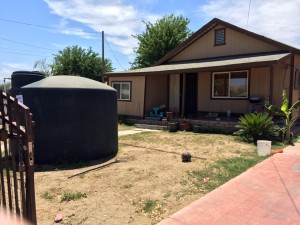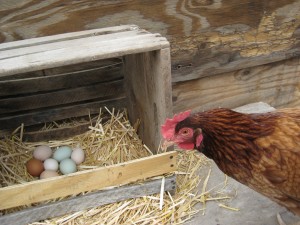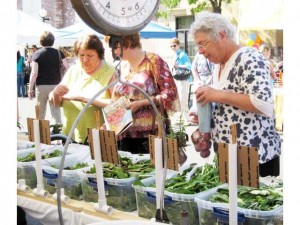-
Recent Posts
- Farm-to-School Month Grantee Spotlight: Santa Ana Unified
- Hispanic Heritage Month — Javier Zamora’s Journey from Farmworker to Farm Owner
- CDFA Celebrates National Farm to School Month!
- Celebrating Hispanic Heritage Month: CDFA Panel Discussion Reflects on Language, Identity and Community
- Secretary Ross at UN FAO Global Livestock Conference in Rome
Recent Comments
- Kathy de Contreras on CDFA IT department honored at “Best of California” awards
- El costo económico de las deportaciones masivas ya es visible en California - Espanol News on Nine California Counties Make Top-10 List for Ag Sales in the U.S.
- Deportations are taking a toll on California’s economy – and have only just begun – The News Beyond Detroit on Nine California Counties Make Top-10 List for Ag Sales in the U.S.
- Kenneth Cooper McNany on California Agricultural Heritage Club seeks nominations to honor pioneering farms and ranches more than 100 years old
- William Griffin on Lowering the boom on illegal fireworks — CDFA teamed up with San Bernardino County Fire to confiscate 13 tons prior to July 4th
Archives
- October 2025
- September 2025
- August 2025
- July 2025
- June 2025
- May 2025
- April 2025
- March 2025
- February 2025
- January 2025
- December 2024
- November 2024
- October 2024
- September 2024
- August 2024
- July 2024
- June 2024
- May 2024
- April 2024
- March 2024
- February 2024
- January 2024
- December 2023
- November 2023
- October 2023
- September 2023
- August 2023
- July 2023
- June 2023
- May 2023
- April 2023
- March 2023
- February 2023
- January 2023
- December 2022
- November 2022
- October 2022
- September 2022
- August 2022
- July 2022
- June 2022
- May 2022
- April 2022
- March 2022
- February 2022
- January 2022
- December 2021
- November 2021
- October 2021
- September 2021
- August 2021
- July 2021
- June 2021
- May 2021
- April 2021
- March 2021
- February 2021
- January 2021
- December 2020
- November 2020
- October 2020
- September 2020
- August 2020
- July 2020
- June 2020
- May 2020
- April 2020
- March 2020
- February 2020
- January 2020
- December 2019
- November 2019
- October 2019
- September 2019
- August 2019
- July 2019
- June 2019
- May 2019
- April 2019
- March 2019
- February 2019
- January 2019
- December 2018
- November 2018
- October 2018
- September 2018
- August 2018
- July 2018
- June 2018
- May 2018
- April 2018
- March 2018
- February 2018
- January 2018
- December 2017
- November 2017
- October 2017
- September 2017
- August 2017
- July 2017
- June 2017
- May 2017
- April 2017
- March 2017
- February 2017
- January 2017
- December 2016
- November 2016
- October 2016
- September 2016
- August 2016
- July 2016
- June 2016
- May 2016
- April 2016
- March 2016
- February 2016
- January 2016
- December 2015
- November 2015
- October 2015
- September 2015
- August 2015
- July 2015
- June 2015
- May 2015
- April 2015
- March 2015
- February 2015
- January 2015
- December 2014
- November 2014
- October 2014
- September 2014
- August 2014
- July 2014
- June 2014
- May 2014
- April 2014
- March 2014
- February 2014
- January 2014
- December 2013
- November 2013
- October 2013
- September 2013
- August 2013
- July 2013
- June 2013
- May 2013
- April 2013
- March 2013
- February 2013
- January 2013
- December 2012
- November 2012
- October 2012
- September 2012
- August 2012
- July 2012
- June 2012
- May 2012
- April 2012
- March 2012
- February 2012
- January 2012
- December 2011
- November 2011
- October 2011
- September 2011
- August 2011
- July 2011
- June 2011
Categories
- AG Vision
- Agricultural Education
- Agricultural Marketing
- Alternative Fuels
- Animal health
- Animal Welfare
- Asian Citrus Psyllid
- Biodiversity
- Border stations
- BSE
- Cannabis
- Cannella Panel
- Climate Change
- Climate Smart Agriculture
- Community-based Food System
- Conservation
- Dairy
- Drought
- Environment
- Fairs
- Farm Bill
- Farm Labor
- Farmers' Markets
- Fertilizer
- Food Access
- Food Safety
- Food Waste
- Glassy-winged Sharpshooter
- Growing California
- Healthy soils
- HLB
- Hydrogen
- Integrated Pest Management (IPM)
- Invasive Species
- Light Brown Apple Moth
- Livestock ID
- Measurement Standards
- Nutrition
- Organic agriculture
- Pierce's Disease
- Pollinators
- Specialty Crops
- State Board of Food and Agriculture
- Succession Planning
- Trade
- Uncategorized
Pages

Video: Why does half of America’s food go to waste? from NPR and PBS
Posted in Food Access, Food Safety, Nutrition
Leave a comment
USDA Seeks Partner Proposals to Protect and Restore Critical Wetlands
Agriculture Secretary Tom Vilsack has announced the availability of $17.5 million in financial and technical assistance to help eligible conservation partners voluntarily protect, restore and enhance critical wetlands on private and tribal agricultural lands.
“USDA has leveraged partnerships to accomplish a great deal on America’s wetlands over the past two decades, Vilsack said. “This year’s funding will help strengthen these partnerships and achieve greater wetland acreage throughout the nation.”
Funding will be provided through the Wetland Reserve Enhancement Partnership (WREP), a special enrollment option under the Agricultural Conservation Easement Program’s Wetland Reserve Easement component. It is administered by the Natural Resources Conservation Service (NRCS). Under WREP, states, local units of governments, non-governmental organizations and American Indian tribes collaborate with USDA through cooperative and partnership agreements. These partners work with willing tribal and private landowners who voluntarily enroll eligible land into easements to protect, restore and enhance wetlands on their properties. WREP was created through the 2014 Farm Bill and was formerly known as the Wetlands Reserve Enhancement Program.
Wetland reserve easements allow landowners to successfully enhance and protect habitat for wildlife on their lands, reduce impacts from flooding, recharge groundwater and provide outdoor recreational and educational opportunities. The voluntary nature of NRCS’ easement programs allows effective integration of wetland restoration on working landscapes, providing benefits to farmers and ranchers who enroll in the program, as well as benefits to the local and rural communities where the wetlands exist.
Proposals must be submitted to NRCS state offices by July 31, 2015. Projects can range from individual to watershed-wide to ecosystem-wide. Under a similar program in the 2008 Farm Bill, NRCS and its partners entered into 272 easements that enrolled more than 44,020 acres of wetlands from 2009 through 2013. Most of these agreements occurred through the Mississippi River Basin Healthy Watersheds Initiative (MRBI). Through partnerships, MRBI identifies high-priority watersheds where focused conservation on agricultural land can make the most gains in improving local, state and regional water quality. The new collaborative WREP will build on those successes by providing the financial and technical assistance necessary for states, non-governmental organizations and tribes to leverage resources to restore and protect wetlands and wildlife habitat.
Through WREP, NRCS will sign multi-year agreements with partners to leverage resources, including funding, to achieve maximum wetland restoration, protection and enhancement and to create optimum wildlife habitat on enrolled acres. WREP partners are required to contribute a funding match for financial or technical assistance. These partners work directly with eligible landowners interested in enrolling their agricultural land into conservation wetland easements.
Today’s announcement builds on the roughly $332 million USDA has announced this year to protect and restore agricultural working lands, grasslands and wetlands. Collectively, NRCS’s easement programs help productive farm, ranch and tribal lands remain in agriculture and protect the nation’s critical wetlands and grasslands, home to diverse wildlife and plant species. Under the former Wetlands Reserve Program, private landowners, tribes and entities such as land trusts and conservation organizations enrolled 2.7 million acres through 14,500 agreements for a total NRCS and partner investment of $4.3 billion in financial and technical assistance.
The funding announced today was authorized by the 2014 Farm Bill, which builds on historic economic gains in rural America over the past six years, while achieving meaningful reform and billions of dollars in savings for taxpayers. Since enactment, USDA has made significant progress to implement each provision of this critical legislation, including providing disaster relief to farmers and ranchers; strengthening risk management tools; expanding access to rural credit; funding critical research; establishing innovative public-private conservation partnerships; developing new markets for rural-made products; and investing in infrastructure, housing, and community facilities to help improve quality of life in rural America. For more information, visit www.usda.gov/farmbill.
Visit NRCS’s ACEP webpage to learn more about NRCS’s wetland conservation options.
CDFA farmers market coupons aim to promote healthy senior eating – from the Turlock Journal
By Alysson Aredas
To the Stanislaus County Area Agency on Aging, a coupon is more than just a piece of paper.
Rather, the Seniors Farmers Market coupon booklet the organization has distributed to local seniors for over a decade helps promote healthy eating amongst older adults and provides an economic boost to local farmers.
“I think it’s a win-win for us,” said Agency on Aging manager Jill Erickson. “It serves as a farmer subsidy by encouraging people to shop in Stanislaus County and it also helps seniors eat more fresh fruits and vegetables.
“We aim to help seniors with low income especially, since the first thing they often omit from their budget is fresh fruits and vegetables,” added Erickson.
Although the Stanislaus County Area Agency on Aging will be handling distribution, the coupons are made available through the California Department of Food and Agriculture’s Senior Farmers Market Nutrition Program.
“The California Department of Food and Agriculture teamed up with the Department of Aging so that they can help promote seniors eating more fresh fruits and vegetables while also promoting farmers markets in order to get more fresh fruits and vegetables at markets,” explained Erickson.
The program provides low-income seniors with check booklets that can be applied towards purchases of fresh fruits, vegetables, cut herb and honey at Certified Farmers Markets. Each booklet contains $20 worth of coupons.
To be eligible to receive a coupon booklet, seniors must be 60 years and older, live in Stanislaus County and have a limited income of $1,800 per month or less for an individual and $2,426 per month or less for a household of two. Only one booklet can be obtained for each eligible senior on an annual basis.
Note – Distribution of coupon booklets has already begun in Stanislaus County and will continue at the Oakdale Farmers Market on July 1 and the Hughson Farmers Market on July 9. Distribution is also underway statewide. For more information contact your Local Area Agency on Aging office.
Posted in Uncategorized
Leave a comment
Drought response efforts making a difference in hardest-hit rural communities
When you type “East Porterville” into your trusty search engine, it offers a few suggested phrases before you even get to the “-ville” part: “water crisis” and “drought.” It’s no secret that this part of California is feeling the brunt of our drought, now well into its fourth consecutive summer. But nothing can replace witnessing firsthand the impacts of the drought on some of California’s hardest hit communities.
On a tour through the community of East Porterville in Tulare County last week, I was struck not just by the drought impacts that have been so extensively documented in the media, but also by the way this community is working together – neighbors helping each other, local non-profit organizations offering assistance, and government agencies finding ways to soften the immediate impacts while working toward long-term solutions.
The purpose of our tour was to gain better insight into small drinking water systems in the Southern San Joaquin Valley. Drinking water is a top priority in this region, with places like East Porterville home to hundreds of families whose wells are already dry, and more at risk.
We stopped first at a drug rehabilitation center whose staff and clients are using filtration systems and trying other tools to address nitrates and concerns about other possible contaminants in their water supply.
We also talked to residents who have no running water at all now that their wells have run dry. In this community, most residents rely on individual, private wells rather than a central system. We spoke to one woman whose well dried up, so her neighbor hooked up a hose to help out – until that well went dry, too. In many homes in their community, water is a scarce commodity. Of the 1,600 comes in the community, more than 500 are out of water.

A water tank installed in an East Porterville yard provides a temporary solution during the ongoing drought.
What was most impressive to me was how that problem is being addressed – by a tremendously cooperative effort involving residents, non-profits and government. A non-profit called Self Help works with residents to bring in temporary tanks which are then installed by Community Services Employment Training, Inc. (CSET) Sequoia Community Corps volunteers. The tanks are filled with water trucked in by United Way. The expenses incurred by each organization are reimbursed with state disaster funding (California Disaster Assistance Act) through the Governor’s Office of Emergency Services (Cal OES).
This is by no means a convenient or durable solution but, in such an emergency, we have to address the immediate needs of a population that has few other alternatives.
We also visited Iglesia Emmanuel, a local faith community working with the county to provide shower trailers, distribute bottled water and generally figure out what else is at the top of the urgency list. Cal OES and local supporters provide reimbursement for the expense of the showers and volunteers from CSET help hand out water.
Our rural communities in general, and the South San Joaquin in particular, are full of people who exhibit that brand of initiative. So many of these residents have either grown up living or working on farms or in the broader agricultural industry; I truly believe that experience breeds a certain talent or capacity for problem-solving – not in the sense of a test to be passed, but because life “out here” so often involves figuring out how to fix things, how to make them work again.
For the longer term, these communities are devising solutions that range from critical local infrastructure projects to consolidation of water districts, and even legislation to make it easier for the cities, counties, Department of Water Resources, the water boards, USDA and other authorities to work together on future response efforts.
I came away from this experience having learned firsthand what CDFA, industry organizations, water agencies and local authorities can do to help. But what was foremost in my mind on the drive home was how much of the real work is being done by the residents themselves, the local businesses and churches, the volunteers. The knowledge and funding and support that government provides is important, but the communities themselves are the key.
When this drought is over, we must maintain these relationships and partnerships. We have a duty to strengthen and support them, because we know there will be a next drought.
From USDA: Agriculture Secretary Vilsack Announces $150 Million, New Partnership to Support Water Quality and Quantity in Drought-Stricken California
Resilient Lands and Waters partnership will focus public and private resources towards conserving and restoring the Sierra-Cascade California Headwaters
Agriculture Secretary Tom Vilsack today joined Interior Deputy Secretary Mike Connor and California Secretary for Natural Resources John Laird to announce a new partnership focused on conserving and restoring the Sierra-Cascade California Headwaters, as part of President Obama’s Resilient Lands and Waters initiative. Over the next two years, the U.S. Department of Agriculture’s (USDA) Forest Service (FS) and Natural Resources Conservation Service (NRCS) will invest $130 million in the partnership, which also includes the Interior Department, the State of California, non-profits, and private landowners. In total, the partnership will yield a minimum investment of $210 million by all partners. The Sierra-Cascade California Headwaters provides 25 million Californians with drinking water and much of the water for irrigated agriculture in the Sacramento and San Joaquin Valleys.
In addition to the partnership, USDA is announcing that $13.7 million is available to California producers and ranchers through NRCS’s Environmental Quality Incentives Program (EQIP), and approximately $6 million remains available to drought-stricken communities through Rural Development’s Emergency Community Water Assistance Grants (ECWAG), making nearly $20 million available to drought-affected communities.
“As several years of historic drought continue to plague parts of the Western United States, there is a significant opportunity and responsibility across federal, state and private lands to protect and improve the landscapes that generate our most critical water supplies,” said Vilsack. “Healthy forests and meadows play a key role in ensuring water quality, yield and reliability throughout the year. Looking beyond this particular drought, resources announced today will help us add resiliency to natural resource systems to cope with recurring drought and changing climate patterns.”
The Resilient Lands and Waters initiative is a key part of the Obama Administration’s Climate and Natural Resources Priority Agenda, a first of its kind, comprehensive commitment across the Federal Government to support the resilience of America’s vital natural resources. Through this partnership under the Resilient Lands and Waters initiative, USDA, DOI, the State of California, and local partners will direct a minimum of $210 million in combined resources towards restoration that will help improve water quality and quantity, promote healthy forests, and reduce wildfire risk in the Sierra-Cascade California Headwaters region.
“Climate change affects every corner of our nation from the Sierra-Cascades to the Everglades. The deepening impact of the ongoing drought is just one example of how it influences all of us,” said Deputy Interior Secretary Michael L. Connor. “In collaboration with other governmental agencies and partners, we are taking a comprehensive, science-based long term view of how to best make our treasured lands and precious waterways more resilient to the impacts of climate change.”
The federal partnership dovetails with Governor Jerry Brown’s California Water Action Plan, a suite of short- and long-term goals to put California on a path to more resilient and reliable water systems and healthy ecosystems over the next five years. Over the next year, California will commit as much as $81 million in ecosystem restoration in the Sierra Nevada.
“California’s Cascade and Sierra Nevada mountain ecosystems are the lifeblood of water for 25 million Californians, our agricultural industry, and the health of downstream estuaries and species,” said Secretary Laird. “Trying to maintain this ecosystem health, in the face of a changing climate, requires that all those responsible – especially the state and federal governments –work together to meet this challenge. That is why the California state administration is pleased with today’s announcement, and looks forward to continuing to work with our federal partners.”
Last month, USDA announced the availability of $21 million through EQIP to help farmers and ranchers apply science-based solutions to mitigate the short and long term effects of drought. Today, Secretary Vilsack announced that 65 percent of the available funds, or $13.7 million, are being reserved for California producers and ranchers. Applications are currently being accepted at local NRCS offices.
Vilsack also announced that USDA has provided $2.7 million in ECWAG funds for eight California communities and $1.98 million to the Coyote Band of Pomo Indians of California in 2015. The remaining ECWAG funding is available nationwide, and applications are accepted at any time through USDA’s Rural Development state and area offices.
Today’s announcement builds on the Obama Administration’s commitment to do everything it can to help the farmers, ranchers, small businesses, and communities facing severe impacts from one of the worst droughts in over a century. Currently, 35 percent of the West is facing severe to exceptional drought. In California, the mountain snowpack that supplies most of the water during the summer months is only a trace above zero. Drought threatens multiple sectors of the economy and leads to increased risks to communities on many fronts. That’s why the Administration’s efforts will help to address the drought challenge from all angles, from employing workers and providing food assistance to making long-term investments to support water efficiency and conservation and addressing wildfire. Through the creation of the National Drought Resilience Partnership, launched as part of the President’s Climate Action Plan, federal agencies are working closely with states, tribes and local governments to develop a coordinated response to drought.
#
Posted in Climate Change, Drought, Environment
Tagged climate change, Department of Interior, Drought, Forest Service, headwaters, John Laird, Natural Resources, NRCS, USDA, Vilsack
Leave a comment
Avian Influenza Update for Backyard Bird Owners, Commercial Poultry Farmers
New Requirements for Bringing Poultry, Eggs, and Related Products into California
 Parts of the Midwest are dealing with a serious and ongoing outbreak of avian influenza, so California is taking extra steps to protect birds here. Poultry farmers, veterinarians and the larger commercial community in general are aware of the additional requirements, which focus on inspecting and testing farms and flocks in the outbreak regions before they can send poultry and products to California. The enhanced requirements will also evaluate the measures in place at the receiving farms and facilities here in our state. Details are available here.
Parts of the Midwest are dealing with a serious and ongoing outbreak of avian influenza, so California is taking extra steps to protect birds here. Poultry farmers, veterinarians and the larger commercial community in general are aware of the additional requirements, which focus on inspecting and testing farms and flocks in the outbreak regions before they can send poultry and products to California. The enhanced requirements will also evaluate the measures in place at the receiving farms and facilities here in our state. Details are available here.
Backyard Poultry
California’s rural communities – and many of its urban and suburban ones as well – are also home to backyard poultry kept by enthusiasts or for small-scale farming. For our backyard bird owners, here’s how you can help protect your flock and our communities:
- Know your bird’s history – always buy from a certified breeder/hatchery or ask where the source flock came from.
- Be an Avian Influenza detective – when obtaining birds, ask if they have been tested for avian influenza and if you are having them delivered, make sure that they meet all import/export requirements. For interstate movement within the US, check the CDFA Avian Entry page; for out of country, see the USDA import/export page.
- Monitor your bird/flock health – isolate and observe new flock additions and returning show birds off-site for 30 days for signs of disease; If you observe signs of avian influenza in your birds, please call the Sick Bird Hotline at 866-922-2473.
To protect California poultry, CDFA personnel will actively enforce the enhanced entry requirements by monitoring border crossing reports, USDA-issued permits, and shipments of poultry and poultry products into California. CDFA personnel will follow up on any shipments of concern. Non-compliant shipments may be subject to fines and/or have poultry and poultry products quarantined, tested or destroyed.
For more information, please visit: http://www.cdfa.ca.gov/ahfss/Animal_Health/Avian_Influenza.html
Southern California remains robust food producer, maintains strong commitment to feed the hungry
You have to go back more than 70 years to get a view of a very different Southern California. Long before urban and suburban post-war development blossomed around Los Angeles, the region was a major agricultural producer. Citrus was the leading crop, and that heritage is all too apparent in the place names that remain today. An example of that is Orange County. Now, to the east, in California’s vast desert, growers learned long ago they inhabited fertile ground for dates, a tradition that endures in 2015. I had all that rich history firmly in mind earlier this month when I had an opportunity to visit Coachella Valley farmers, including date producers. I also traveled to Orange County to learn about the vital work at a local food bank to feed the hungry.
While the drought is relatively new to many of us in California, the desert is accustomed to scarcity, and water districts and their customers are always looking for innovative approaches to help farmers produce a variety of crops. While in Coachella Valley, I was able see the benefits of that innovation and adaptation with tours of table grape packing houses where they are just wrapping up the harvest, and a tour of a date packing plant. I also enjoyed meeting with farm and water leaders to discuss the drought and other current issues.
Additionally, I was honored to meet CDFA employees working in Southern California in our Shipping Point Inspection program. These employees make sure that table grapes at cooling and handling facilities meet minimum quality and maturity standards before they are shipped to market. This is important work in the supply chain to bring top-quality produce to consumers.

Secretary Ross (R) with CDFA Shipping Point Inspection employees in Southern California. From left, Bob Ferrier, Omar Soloria, Inspection Services Director Rick Jensen, and Ellen Honda.
My trip to the Orange County Food Bank was inspirational. The organization is teaming up with the United Way to reinforce a commitment to improve access to produce. The groups have a fundamental understanding that it’s essential for all of our citizens to eat healthy foods. In that vein, I was able to attend a ribbon cutting ceremony for a water-saving aquaponic vegetable garden at a Santa Ana history center that is also a partner in this effort, through a pledge to bring-in needy families to harvest the garden and take the produce back to their communities.
California agriculture is truly a miracle of abundance and diversity. It includes farmers and ranchers from the southeastern reaches of the desert and extends all the way to its northwestern corner. Our food production is astounding, feeding the world, the nation and the needy.
Posted in Drought, Food Access
Leave a comment
Modesto Bee editorial: Pope, farmers have more in common than they know
From the Modesto Bee editorial board:
Two stories caught our interest this week that centered on folks who might not seem to have much in common – Pope Francis and some Central Valley farmers.
The first story was a look at the document first leaked, then released, by the Vatican containing Pope Francis’ plea for all of mankind to take better care of Earth. Forcefully, he condemned exploitation and unbridled consumption of resources that we all depend on and should share.
With a degree and a work history in chemistry, Pope Francis apparently wants to make the estimated 2 billion Catholics worldwide understand that they must do more to protect what he considers one of God’s greatest gifts to humanity – our planet. He noted the pollution man creates daily is destroying the Earth and endangering everything that lives on it. He calls for changes in our lifestyles and energy consumption.
How does that connect to farmers?
The day after we read of the pontiff’s encyclical, we read a story from Modesto Bee reporter John Holland about a program to help protect threatened tricolor blackbirds. By agreeing to delay harvest of a feed crop that provides a favored nesting site for birds, Valley farmers will likely save thousands of nests, eggs and fledglings. That could make a difference for a species that once numbered in the millions but now is feared to be less than 150,000.
The nutritional value of the harvest will be degraded by waiting, but a payment of $600 per acre from the federal Natural Resources Conservation Service will help offset the loss.
We don’t know if this act of stewardship will help the environment, but it can’t hurt. All things, after all, are connected.
We applaud both the federal program and the farmers. But they’re not the only examples of environmental consciousness found on farms. Not even the best.
Take the methane digesters at Fiscalini Farms, west of Modesto, or on the giant digester at Joseph Farms in Atwater. They gather up a substantial amount of manure (it takes a lot of cows to make all that cheese), remove the methane and use it to generate power.
Methane is a far more potent ozone killer than carbon dioxide, so keeping any of it out of the atmosphere is a good thing. When using it in place of fossil fuels to create electricity, that’s even better.
The cheesemakers at Joseph Farms and Fiscalini have figured out a way to do that.
Others farmers have installed solar panels to generate electricity, and others have replaced diesel pumps with electric pumps.
In his encyclical, the pope takes to task all who deny the obvious changes in our climate and their cause: “The attitudes that stand in the way of a solution, even among believers, range from negation of the problem to indifference to convenient resignation or blind faith in technical solutions.”
Those farmers who are protecting blackbirds, who are finding a way to keep methane out of the atmosphere, who care more for their land than they do for short-term profits – and we believe that describes most farmers – are doing what at least one man of God thinks they should be doing.
When you’re doing God’s work, you don’t always have to wear a backward collar or a robe; sometimes mud-caked boots and ballcaps work, too.
See the editorial on the Modesto Bee site here.
Posted in Climate Change, Dairy, Environment
Tagged climate change, dairy digesters, Fiscalini Farms, Joseph Farms, Pope Francis, tricolor blackbirds
Leave a comment
‘Small Potatoes’ – from the Growing California video series
The latest installment in the Growing California video series, a partnership with California Grown, is “Small Potatoes.”
Posted in Uncategorized
Leave a comment
Sacramento Bee editorial on Japanese Beetle eradication program
By the Sacramento Bee Editorial Board
Like so many other living things, Japanese beetles find California’s climate to be ideal, and they absolutely love the food, a little too much.
These guests are unwanted, and worse, a threat. Fearing that the voracious pests will spread from backyards to valuable farm crops, the California Department of Food and Agriculture has embarked on an eradication effort in Fair Oaks and Carmichael, where the shiny green insect has been detected.
Some residents are upset, believing the department is being too intrusive, and worrying that the pesticides that kill the beetles could be detrimental to their health and that of their children and pets.
Clearly, California Ag Secretary Karen Ross would prefer not to be spraying in suburban backyards. But she and Nick Condos, chief of her plant health division, told The Sacramento Bee’s editorial board that the risk of doing nothing is too great.
Seeing no reasonable alternative, the state is imposing on the owners of 41 properties in Fair Oaks and 247 in Carmichael by seeking access to their yards to spray.
We are persuaded. The beetles can make short work of backyard ornamentals. But the threat is far worse for farms. Take a look at the list of plants the bug prefers, and you can see why.
It includes plants we’d sooner do without, crabgrass and poison oak. But it also destroys virtually everything else green, from walnut trees and elms to strawberries, apples, alfalfa, plums, peaches, grapes and wisteria.
The California Office of Environmental Health Hazard Assessment is stocked with scientists who study the health implications of chemicals. Not known for pulling their punches, the scientists regularly get under industry’s skin for their conclusions.
The office notes that California identifies carbaryl, the active poison in the beetle pesticide of choice, as a chemical that in high enough doses could cause cancer or reproductive harm. But, it adds, the diluted version being used in Fair Oaks and Carmichael poses “no significant health risks.”
On the flip side, a beetle infestation of the sort that has occurred in Northeastern states could result in California plants and farm products being quarantined. Agriculture, a $40 billion-plus industry, already is suffering from drought. A widespread infestation would have broad implications, none of them good.
The Brown administration’s decision to act aggressively to eradicate the Japanese beetle is wise. Residents may be inconvenienced. But a greater good is at stake. If state ag workers come knocking on your door, let them into your backyard, for everyone’s sake.
Posted in Uncategorized
1 Comment




